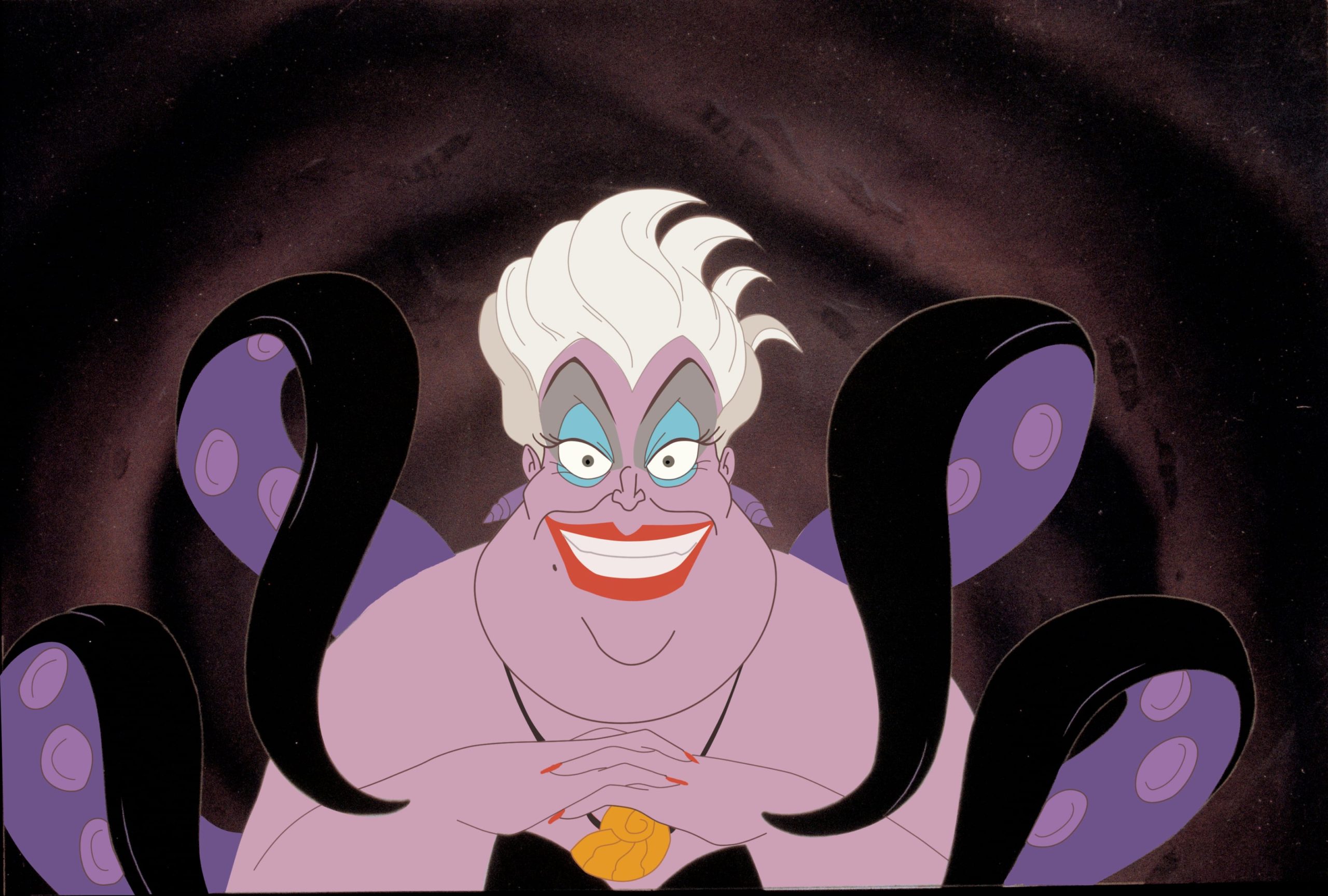Table of Contents Show
Disney movies have become a staple of modern childhood. Some of the most memorable figures in the Disney lineup are, of course, the Disney Princesses and the classic Mickey Mouse and his gang of pals, but just as crucial are the villains of these stories. Over the years, Disney Villains have changed vastly, and by examining how they’ve changed, one can learn about the time they come from and gain a better appreciation for these gritty characters.
With all of the various movies Disney has created over the years, it would be nearly impossible to give every villain a thorough analysis individually. Luckily, the Disney movies have already been grouped into several generally agreed-upon eras based upon the time they were released. These eras help us group together similar films and consider larger trends in Disney Villains without individually discussing every villain/film.
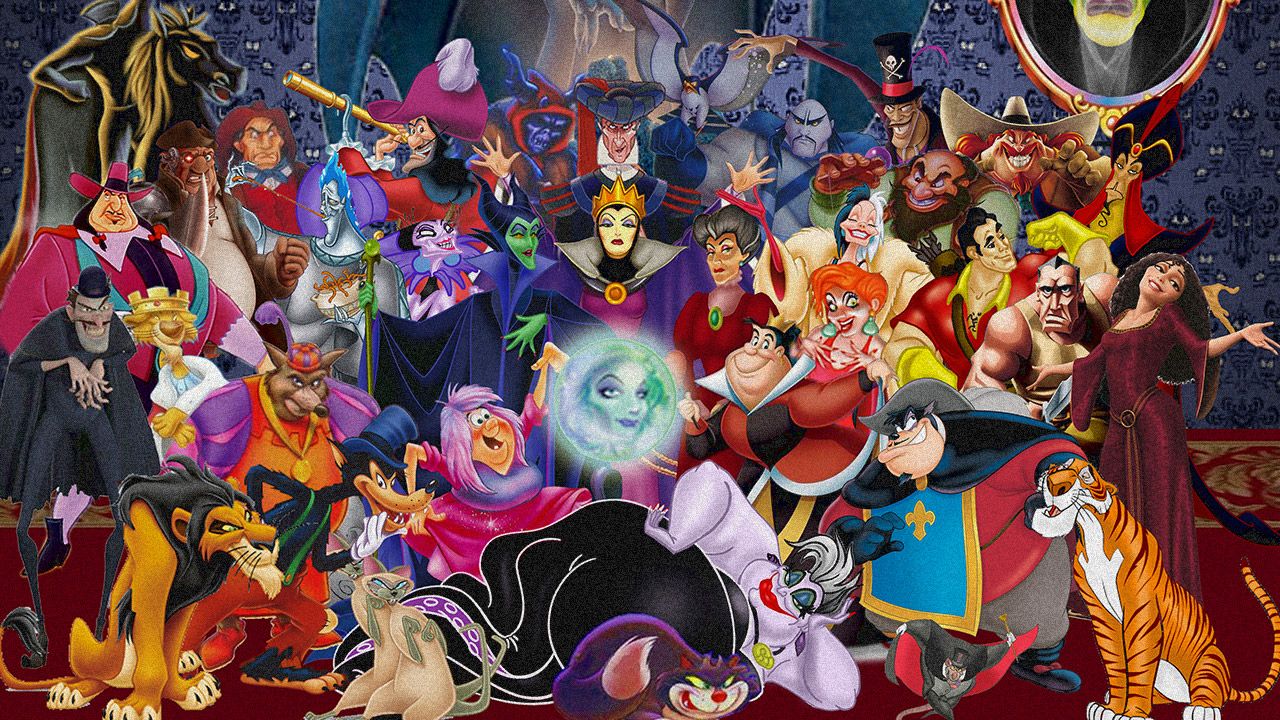
There are four crucial factors contributing to the overall trends and changes within Disney villains. The character’s design, vocal patterns, their motivations, and how effective of a villain they are. Though there are far too many movies and villains to go through each one, clear patterns and deviations emerge by considering the trends of the different Disney eras in the context of those four factors. Perhaps the fascinating part about villains is what they reveal about the people and society that created them. In the words of Jerom Chom, “all cultures can be analyzed and understood based on the monsters they create and champion.” (( Cohen, Jeffrey Jerome. “Monster Theory.” University of Minnesota Press, 3 Mar. 2021. )). Thus, by looking at the trends of Disney villains, one can consider how character tropes have changed and how our society has shifted over the years.
Entering The Golden Age (1937-1942)
This first era of Disney is where the traditional and perhaps most condensed version of the Disney Villain is born. They are dark, evil to the core, and their stories are simple; these are the traditional scary villains.
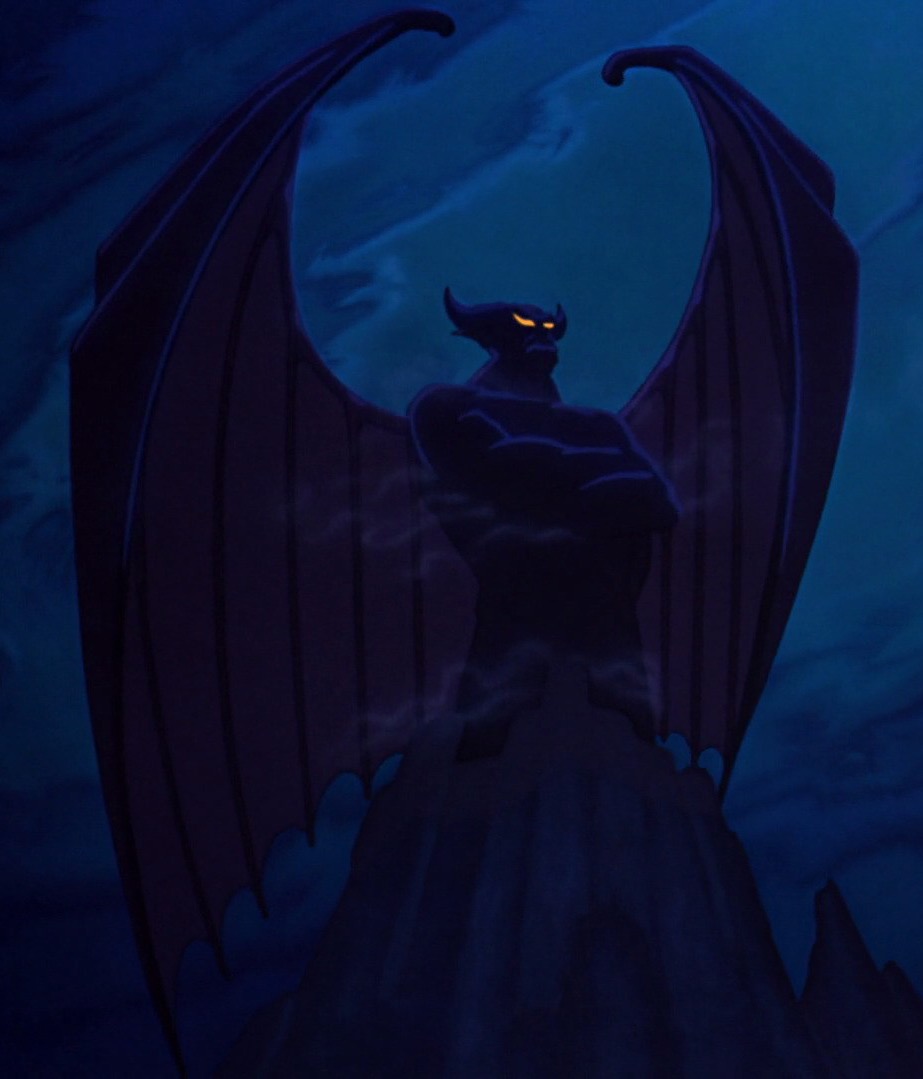
Visually, these villains are distinct from the heroes. They appear in dark lighting and ambiance and are draped in dark clothing and a sneer. From their first instant onscreen, viewers can tell that they are antagonists — their character design is purposefully unnerving. Chernabog’s devilish appearance and glowing eyes, as well as the constant glower on the Evil Queen’s face, are examples of this obvious villainy at first glance. In addition, their voices were crafted to be that of an obvious villain. Rather than Snow White’s girlish giggling, the Evil Queen’s voice is low and dramatic. Thus, the first two things a viewer experiences from this era of villain are crafted to make the antagonist immediately identifiable as evil.
Motivations Of Golden Age Villains
In regards to their motives, these characters are extremely flat. If a reason for their behavior is given at all, it is a petty one. To illustrate, the hunter shoots Bambi’s mother not because of some dramatic backstory but just because he is hunting, and the Evil Queen wants to kill Snow White because she’s prettier than the Queen herself.
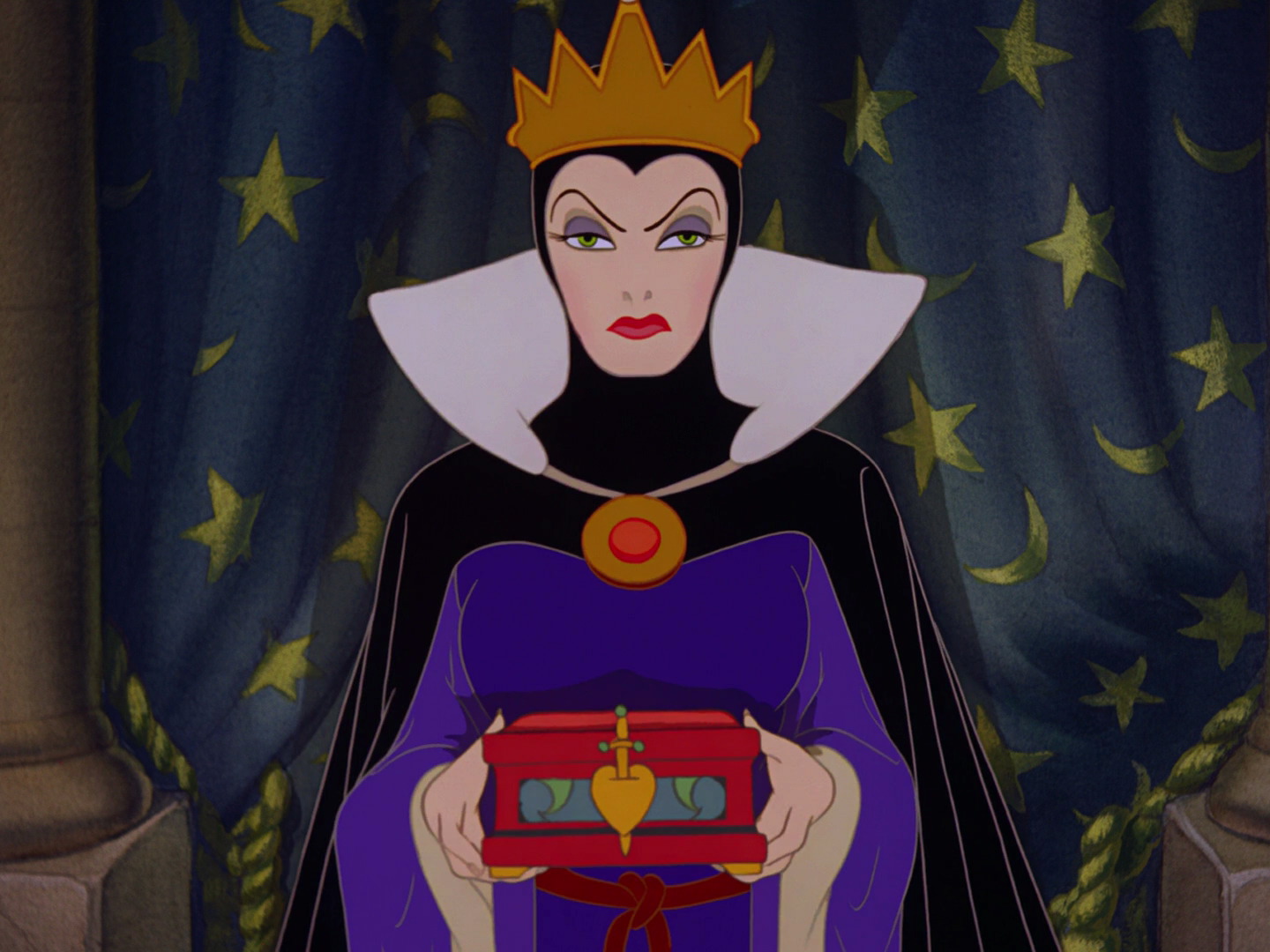
This is to say that the writers either were not interested in exploring the villains or thought these foolish or nonexistent motivations made them more despicable. What could be worse than a woman trying to murder her step-daughter? A woman who decides to do so because of vanity. In regards to their effectiveness, these villains excelled. They were frightening and intimidating, driving the story forward and existing as a constant looming threat.
Golden Age Villains Reflected “The Public Enemy”
These effective, easily identified villains had little to no development to explain their devious actions. This was a very black-and-white approach to storytelling that was easy for children to understand and digestible in the context of their generation. At this time, the USA began to experience World War II. The public had very distinct enemies that posed a massive threat. The enemy was easily identified by their physical appearance/uniform and their distinct language and accents. Just as with the Disney villains, no one was interested in the enemy soldiers’ motivations were; they were only interested in defeating them as quickly as possible. In this way, the Disney villains of this era correlate very clearly with the villains of the time. The Disney villains were a reflection of the cultural public enemy.
The Absence Of The Wartime Era (1943-1949)
This era was filled largely with shorts because Disney had a limited budget and animators available to them. Moreover, Disney also participated in creating propaganda for the US military (( Bell, Brittany. “The 7 Eras of Disney Filmmaking.” Disney Avenue, DizAvenue, 13 Aug. 2015. )).
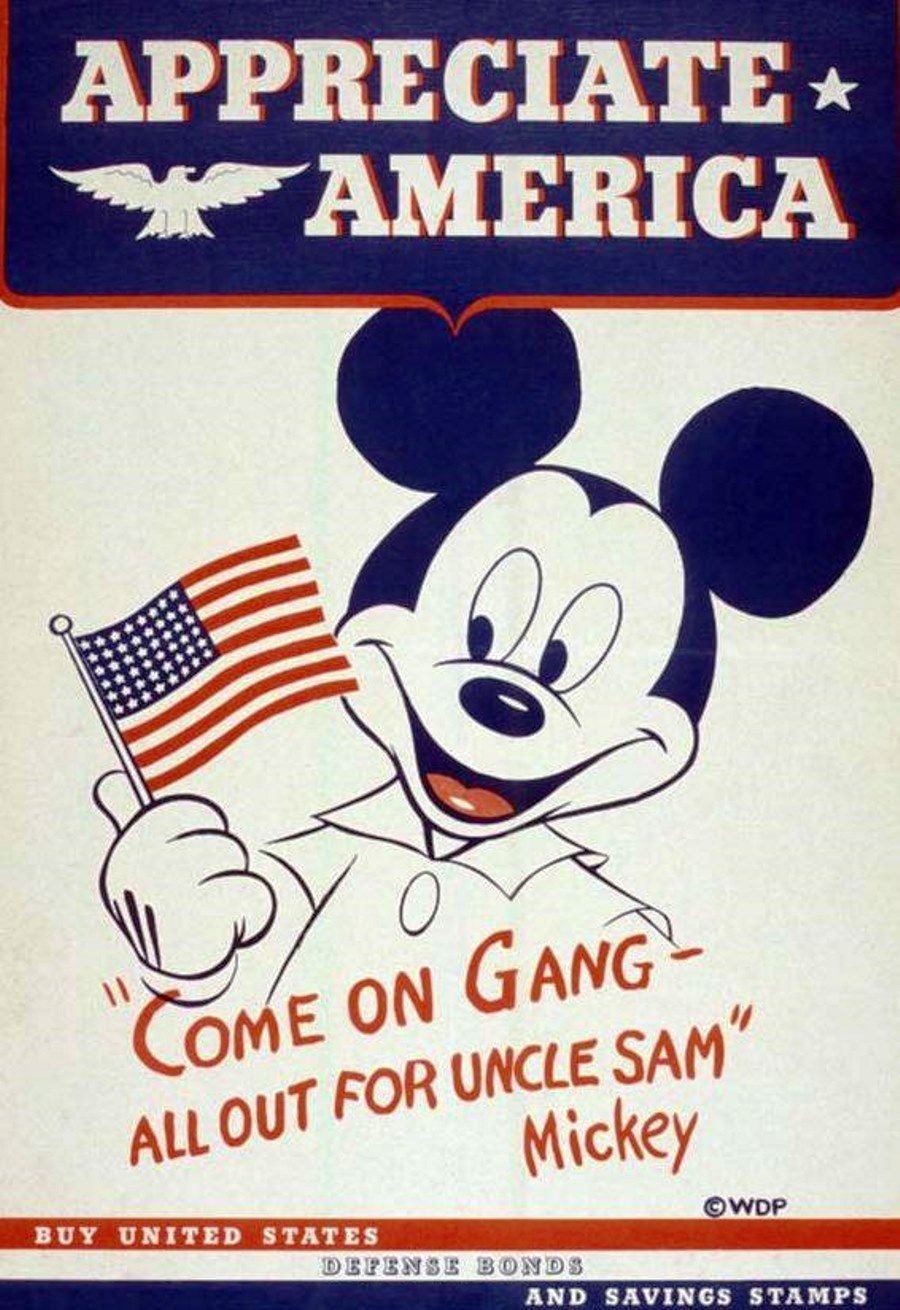
Since this was far from a normal filmmaking era and contained no real villains or even full films, this era will not be included in the analysis.
The Silver Age (1950-1969)
This age introduces the humorous villain. These characters shared many visual traits with their predecessors but were distinct to themselves in other ways. As a result, they are often much less effective and lack the more fearsome Golden Age villains’ overall dramatic and intimidating characteristics.

Animator Mark Davis describes the humorous villain best in regards to Cruella De Vil; “While what she was doing wasn’t very nice, she herself was an entertaining character.” (( The Art of Evil: Generations of Disney Villains.YouTube. Disney Pixar Studios. )). This category includes Captain Hook, the Queen of Hearts, Cruella De Vil, and Madame Mim.
Visuals Of Humorous Villains
These villains, like the previous era, were easily identified. They frequently shared the color pallet of red and black and the general sharpness of the characters. The heroes are drawn with rounded cheeks and soft-colored clothing; Captain Hook has a pointy mustache and a hook for a hand. However, some of these villains do have a more comically round appearance as well as the sharp elements they are dressed in.
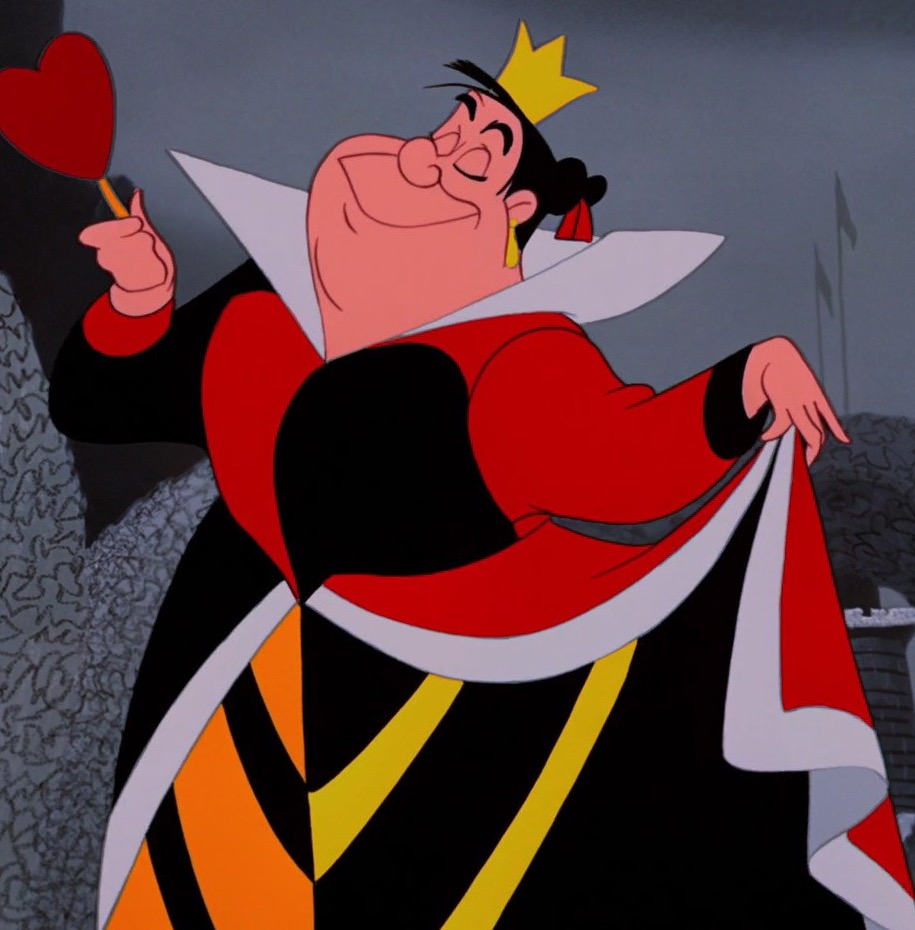
The Queen of Hearts from Alice in Wonderland, for example, is round and large with clownish expressions, yet she retains the same dramatic red and black colors. Additionally, her costume still has sharp points within its bulbous form, specifically her dress’s crown, hair, and collar. The result is an identifiable but less intimidating villain. They lack the darker edge of their predecessors while being similar enough to be legible to the viewers.
The Importance Of Accents
The way a character sounds is one of the first things that an audience will judge the character. It was said that Golden Age villains were othered from their heroic counterparts, which remains true in a few additional ways. Villains’ voices are still separate from the heroes, but Disney uses accents and laughter to the same effect rather than solely using tone to establish difference.
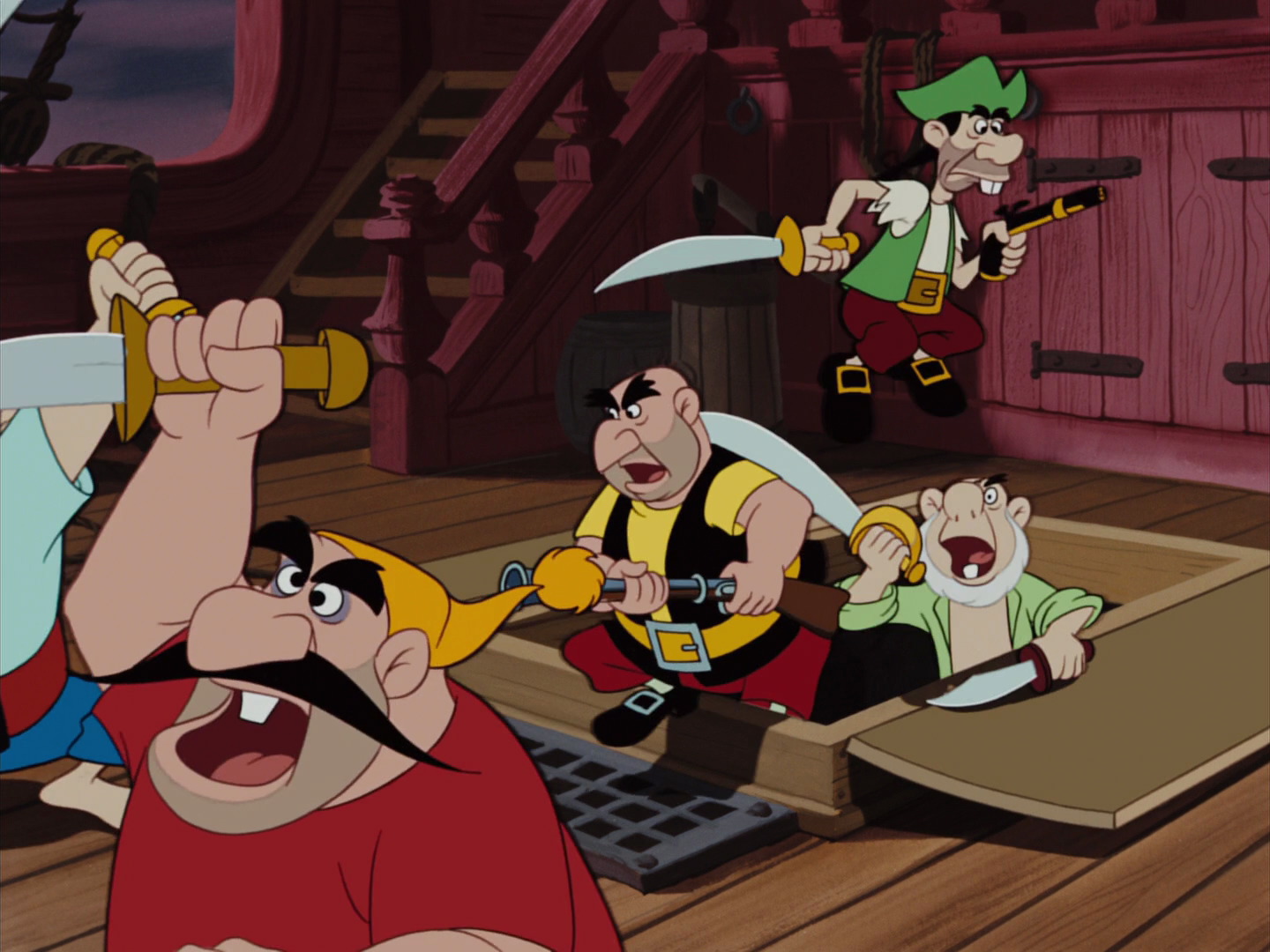
Accents, in particular, were used to signal these villains were different from the heroes of the story. By changing the way they talked, the film could quickly and efficiently ‘other’ villains. Children naturally feel safer with familiar people, which applies to people with the same accent. In fact, “over half of the distinctly bad characters in the main Disney Classics, from 1937-1994, spoke with a non-(general American) accent.” (( Kjeldgaard-Christiansen, Jens, and Sarah Helene Schmidt. “Disney’s Shifting Visions of Villainy from the 1990s to the 2010s: A Biocultural Analysis.” Evolutionary Studies in Imaginative Culture, vol. 3, no. 2, 2019, pp. 1–16. Jstor, doi:10.26613/esic.3.2.140. )). An example of this in action is Captain Hook’s pirate crew or Cruella’s posh English accent. The heroes and other non-villainous characters commonly speak with a general American accent. While this is easy to establish shorthand, it can also be problematic by establishing the connection between a certain accent only with villains.
Humorous Villains’ Motivations
The motivations of these characters remain largely unimportant. They have reasons for their cruel actions but said reasons are petty or unimportant. Madame Mim has a crush, and Cruella wants a coat, for instance. Not an excuse to steal and murder puppies, but at least they have reasons at all.
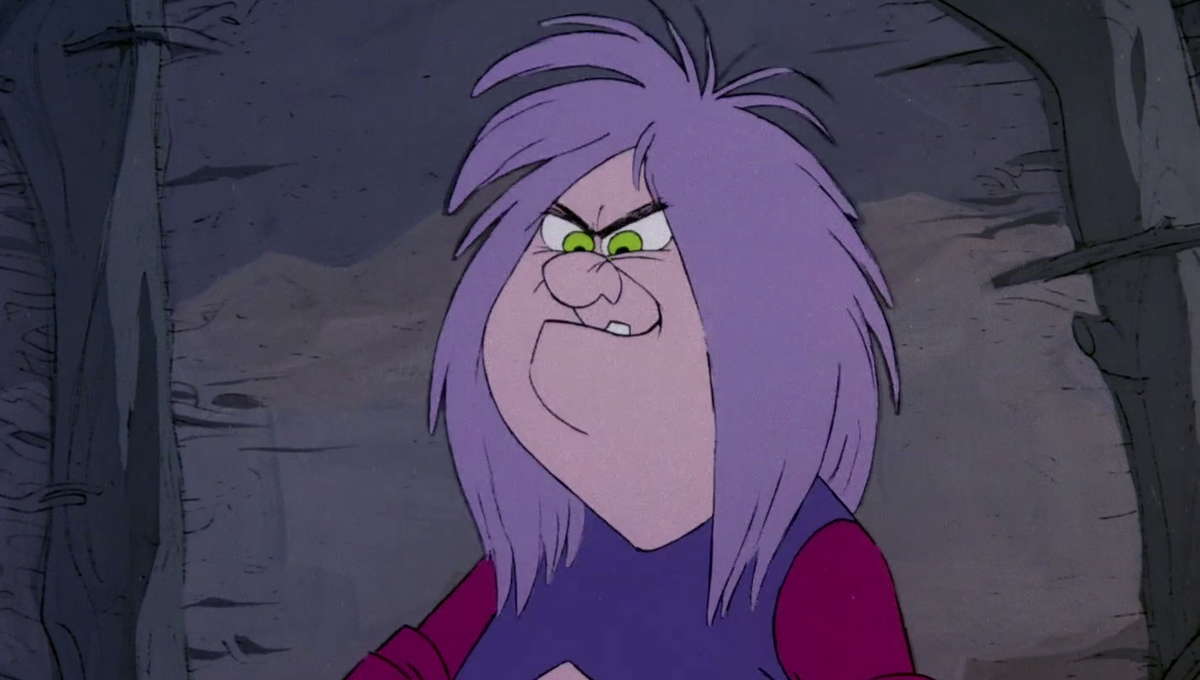
Some suggest that these villains seem to exhibit mentally ill behavior (( Kublawi, Virginia. “The Evolution of the Disney Villain.” Geeks Gamers, 28 Oct. 2019. )). It is indeed true that this group can be manic and obsessive in ways previous villains did not. They are prone to fits of irrationality and unpredictability to outright ludicrous ends.
Cultural Significance Of Humorous Villains
This explanation could offer insight into the social concern that this era of villains reflects. By the Silver Age, people were celebrating the war’s end, and soldiers were coming home. Today, people understand that war has many psychological effects which can lead to PTSD and other issues. In the fifties, people were not as knowledgeable of these issues; the return of all these WWII soldiers would have put mental illness at the forefront of society as they dealt with their trauma.
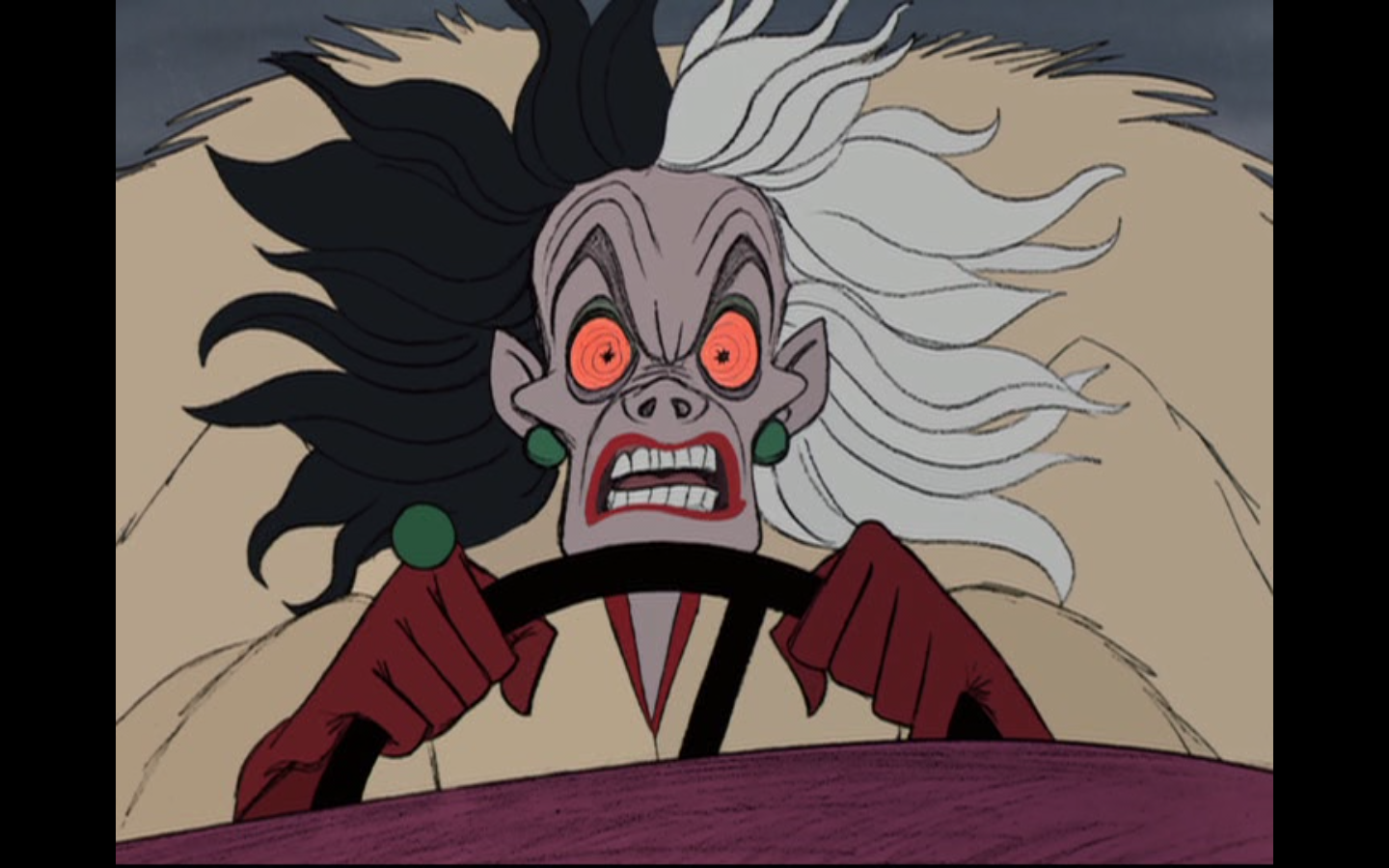
While it is upsetting to consider displaying such a serious topic in this manner, today, such issues are treated with more respect and caution than the animators of the fifties would have. Or, perhaps, the animators were subconsciously displaying this cultural anxiety in their choice to create mentally unstable villains.
Calling Back To The Golden Age
While this new swath of villains exposes a sense of new cultural anxiety, the old concerns and preferences did not disappear. Instead, the previous type of villain can be seen lurking in the Silver Age. Cinderella’s Lady Tremaine and Sleeping Beauty’s Maleficent are perfect examples of the dark, brooding villain.
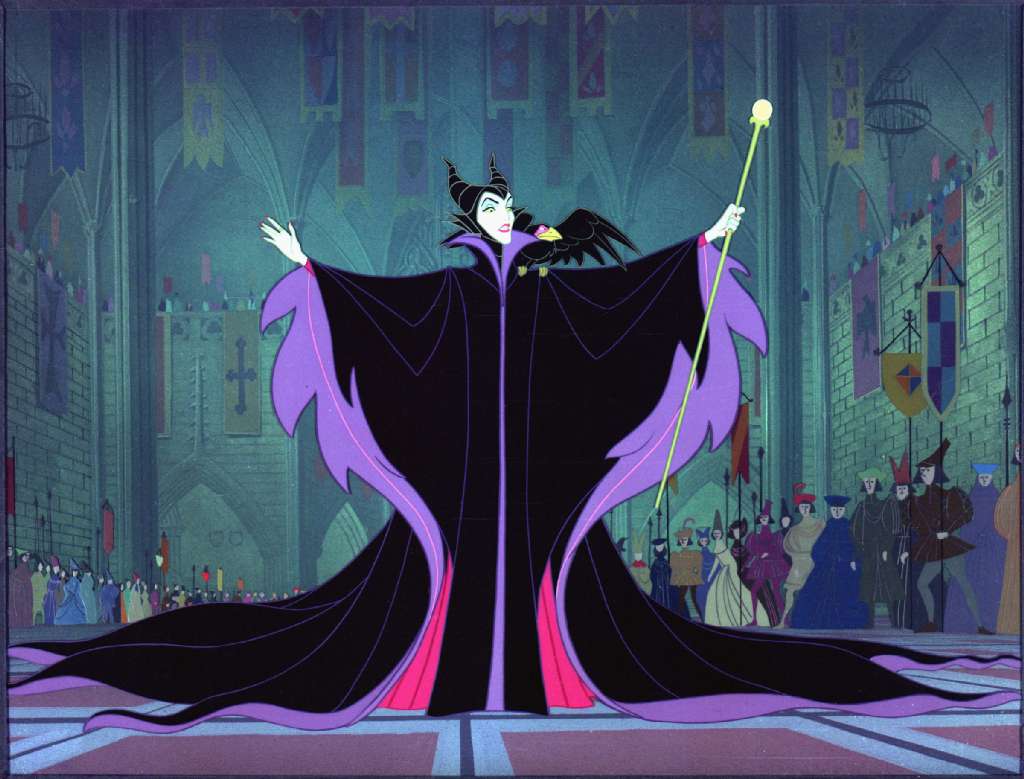
They are so similar to the Evil Queen that they are often put into a category all their own called the Wicked Matrons (( Kublawi, Virginia. “The Evolution of the Disney Villain.” Geeks Gamers, 28 Oct. 2019. )).
The Bronze Age (1970-1988)
Films staring animals like The Aristocats, Robin Hood, Fox and the Hound, and The Great Mouse Detective were made in this era rather than traditional fairytale stories. The only film featuring a human main character was the Black Cauldron. This whimsical choice in characters is also reflected in the villains of this era.
A Visual Shift Away From Classic Villains
There has been a common theme of dramatic black and red/purple coloring in the last few eras. For the first time, there is a large moment away from that traditional appearance. It does still appear in one or two villains; however, that is not the norm. Instead, villains like Edgar from Aristocats appear. He is bumbling, old, and wearing a common suit rather than any dramatic costume. He lacked the sharp, angular look of previous Disney villains.
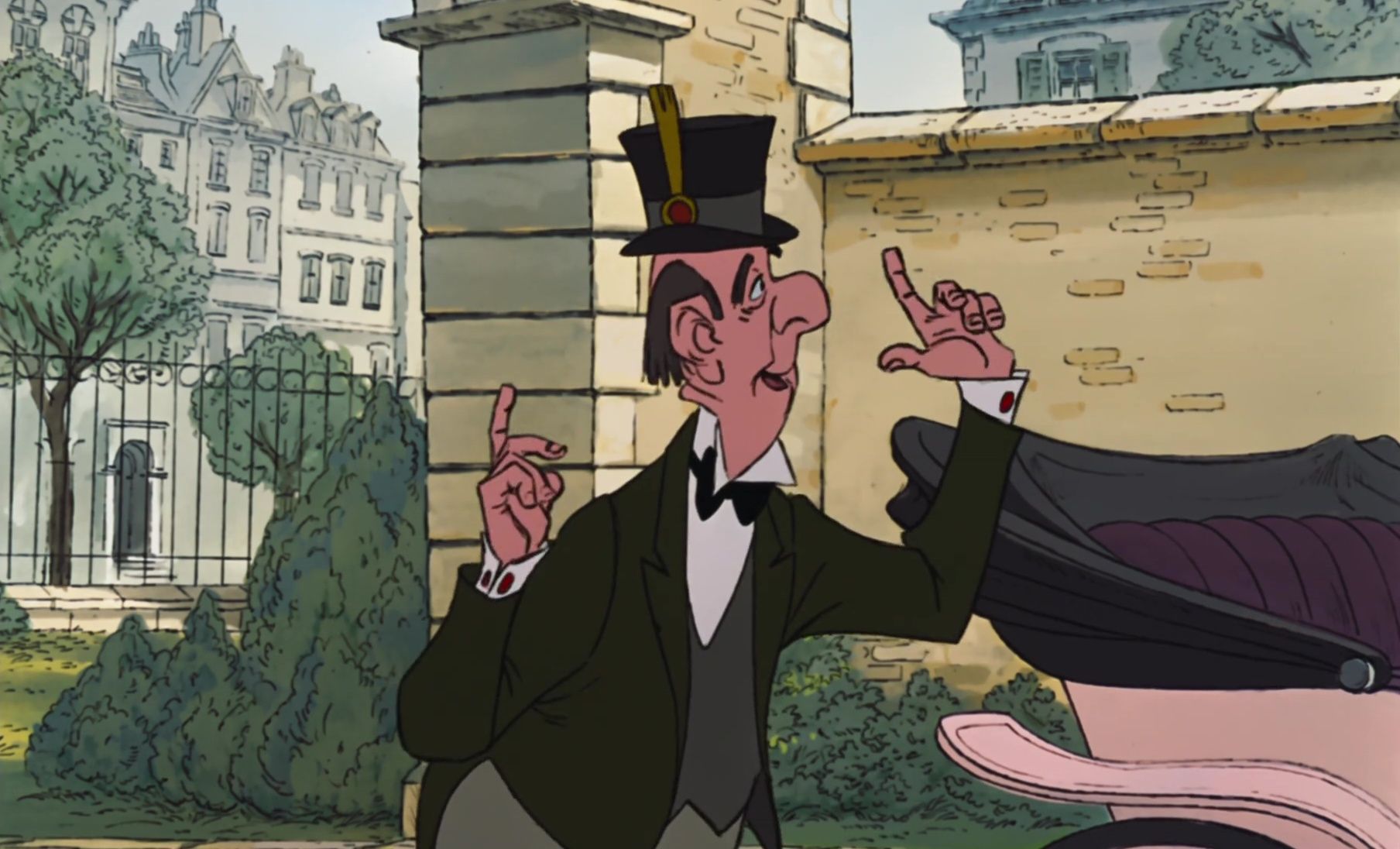
He is not a very threatening man, but surely someone a few cats can manage to outwit. This matches the trend of the general Bronze Age villains. They are rounder, everyday types of creatures and people, not dramatic steal the show characters. Disney has, at this point, begun relying more upon the facial expressions and vocalizations of the villain to explain that they should not be trusted.
Maniacal Laughter
While laughter is not inherently evil, the way in which one laughs is very telling. You wouldn’t expect Cinderella to cackle or let out a low, ominous chuckle, for instance. Those verbal cues are only used for villains and other dubious characters. Laughter is hard to fake, or at least hard to fake well (( Kjeldgaard-Christiansen, Jens, and Sarah Helene Schmidt. “Disney’s Shifting Visions of Villainy from the 1990s to the 2010s: A Biocultural Analysis.” Evolutionary Studies in Imaginative Culture, vol. 3, no. 2, 2019, pp. 1–16. Jstor, doi:10.26613/esic.3.2.140. )). Therefore, when a viewer hears someone laugh in a ‘villainous’ way, they are naturally inclined to believe that person’s intentions to be malicious rather than benefit from the doubt. Just as important as the way someone laughs is why the person is laughing in the first place.
Though she is not from this era, Cruella is a perfect example of this concept. She laughs at the notion of killing the puppies, which is horrifyingly inappropriate and shows the audience her true villainous colors. That concept is used in excess during this era to identify the villains. This method of identification is effective but lacks a certain level of intimidation. That makes it one of the best ways to make sure this type of character, who needs to be obviously bad but not too overwhelming for the heroes they are up against, is known to be villainous.
Driven By Money
These characters don’t have the most thoroughly explained motivations, but they have a common thread. They are all intensely greedy characters, and their desire for more wealth drives them throughout these movies. Edgar wants the inheritance of the wealthy widow, Madame Medusa wants priceless gemstones, and King John wants to horde the kingdom’s wealth, for instance.
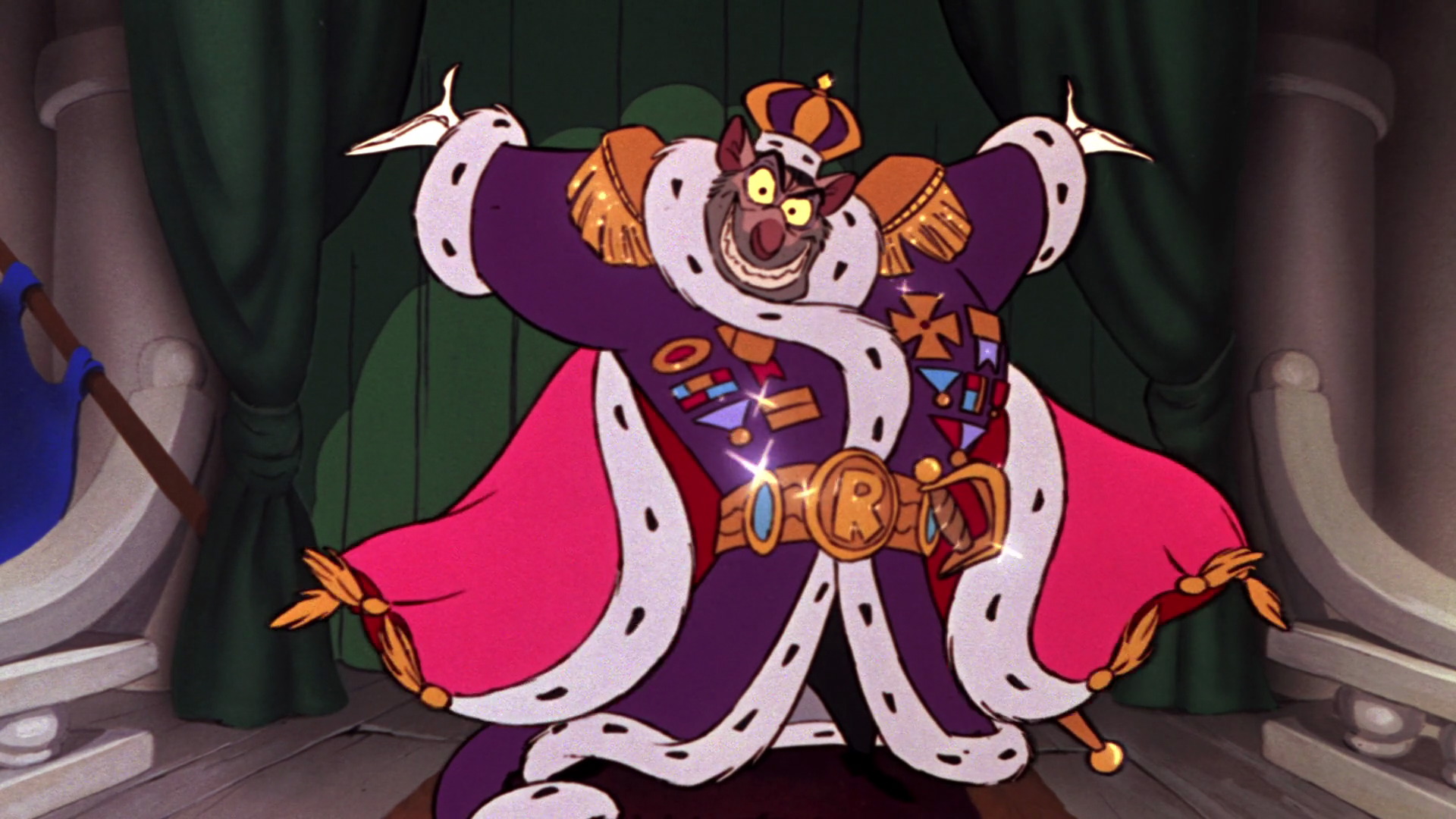
This suggests that the cultural anxiety these villains reflect is economical. The 1970s saw incredible inflation and unemployment rises, and the 1980s brought on a deep recession. After the post-war boom of the previous decade, this shift was a drastic change (( Moffatt, Mike. “What Happened to the American Economy in the 1980s?” ThoughtCo. )). When one thinks of the 1970s and 80s, flashy clothing and the civil rights movement often come to mind. Therefore, greed might seem an odd thing to be the primary cultural anxiety placed into these villains. Yet to the people who were consuming and creating these films, the economic struggles that made up this era were a substantial part of their daily lives. Thus, it makes sense that such worries made their way, consciously or not, into the antagonists of these films.
The Disney Renaissance (1989-1999) And Post Renaissance (Early 2000s)
This section will discuss both the Disney Renaissance and Post Renaissance. The reasoning behind this choice is that while the films have a stylistic shift, the villains seem to overlap in theme/style.
A Return To Dark, Dramatic Appearances
Rather than the silly villains from the last two decades, these villains dramatically stand out. Be it Ursula’s tentacles, Jafar’s spiked shoulder pieces, or Hades’ fiery hair, they all have some feature that drawn the eye.
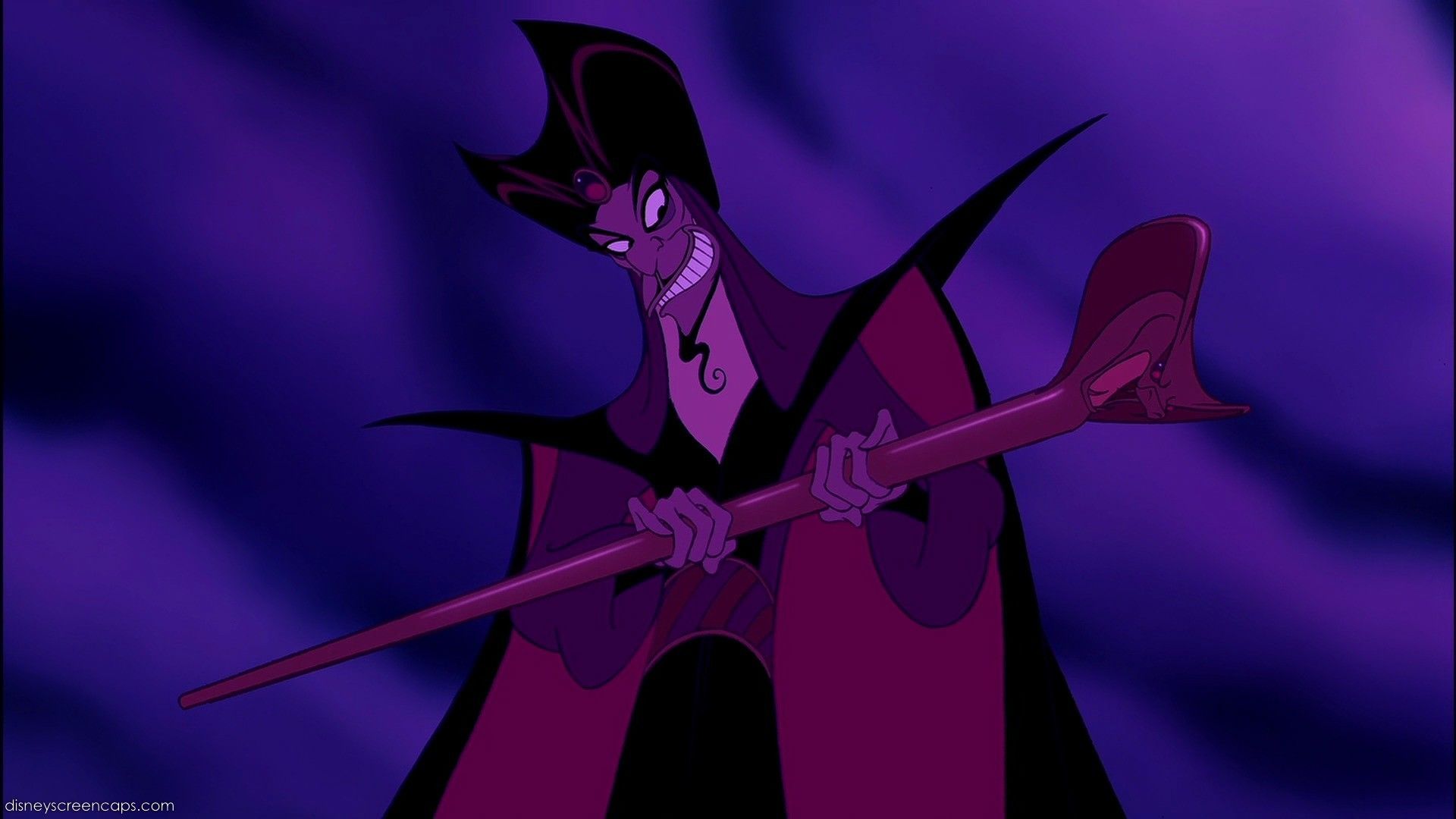
Visually, some of these villains highly resemble the brooding figures of the Gold and Silver Ages. They are drawn with the classic black and red/purple dramatic costumes. Even when the villain is utilized as a comedic effect, such as with Hades, they aesthetically fit in with the older theme of angular, dark-clothed villains.
Vocal Patterns
The vocal patterns of these villains follow the established paths of previous villains. This era of Disney is filled with low, drawling voices and ominous laughter that signals their nefarious motives just as plainly as the character design choices. The accents previously discussed are present here as well. Scar from the Lion King is a glaring example of the use of accents to other a villain. He is supposed to be Mufasa’s brother and grew up in the same pride, yet he is the only lion with a British accent.
Power Hungry Villains
For the first time in Disney’s history, there is an effort to give villains clear and understandable motivations that do not make them feel flat. These villains aren’t just after money; they want power. This has become a cliché today, but compared to their predecessors, these villains are incredibly ambitious.
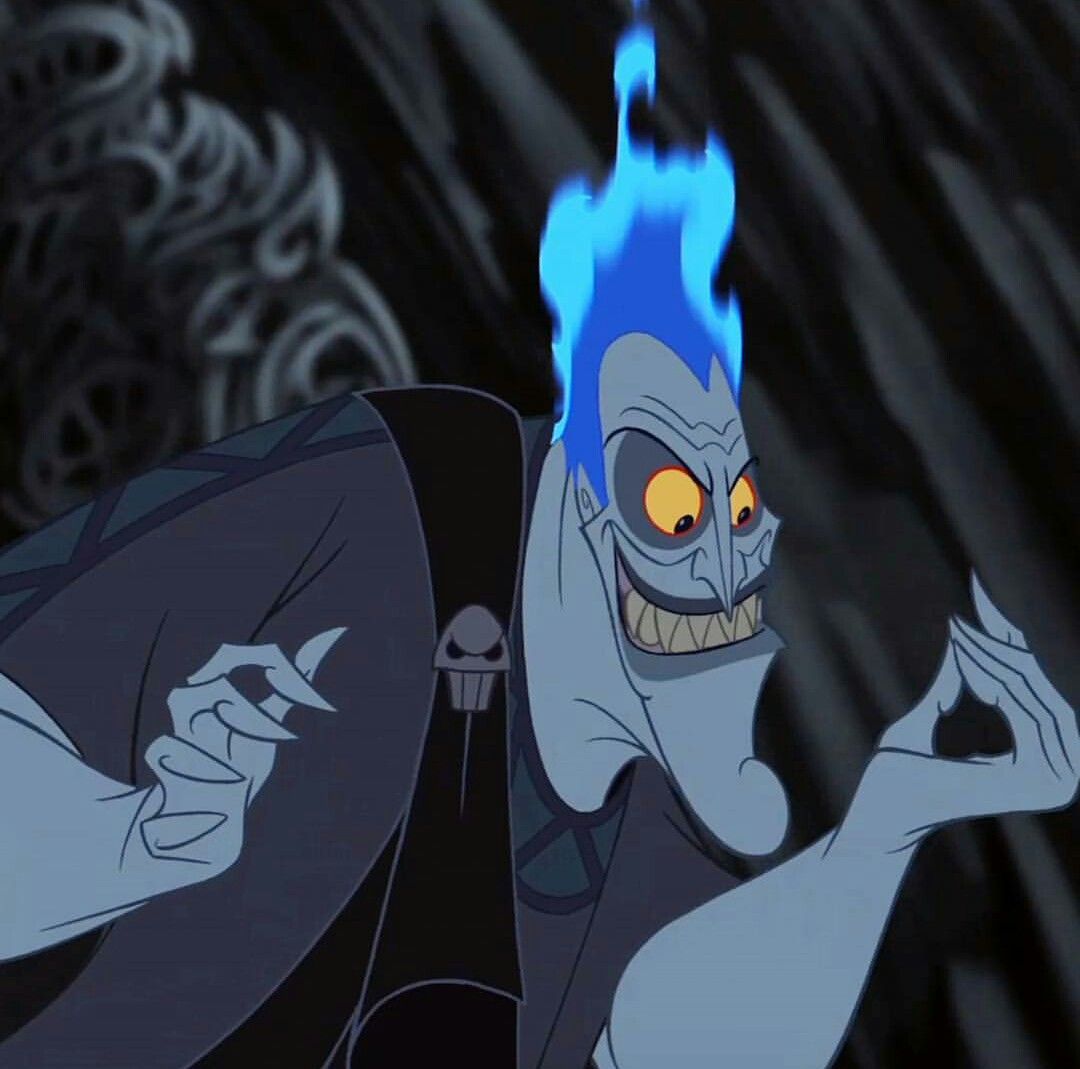
Even more drastic of a change is that the films explain the reasoning behind villains’ motivation. For example, Jafar wants power because he feels passed over and thinks he deserves it after working at the Sultan’s side. Similarly, Hades has the relatable motivation of wanting power because he has spent his life feeling unappreciated and shunned by his fellow Gods. The viewer understands villains’ actions on a more emotional, rational level than before. This makes the villains feel less flat as characters and explains why they fight so hard for what they want. Their desperation makes them even more formidable as a threat because the audience understands that they will not stop until they get what they want.
Gaston: A Villain In Disguise?
Gaston is an interesting case because, at first glance, he is completely different than previous Disney villains. He wears red, but he doesn’t participate in the dark environment that other Disney villains do. Instead, the character that is constantly enveloped by darkness is the Beast, a hero. This film uses the typical and established visual cues of a villain to confuse and mislead the audience.
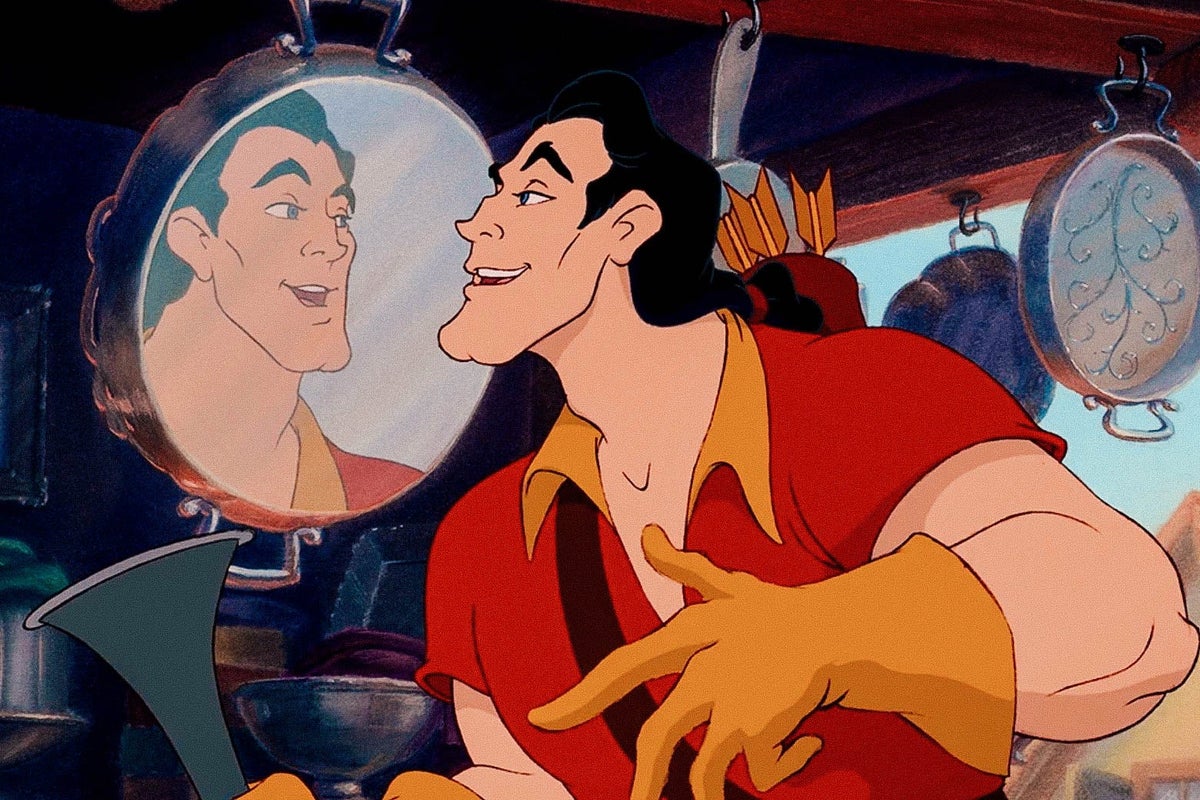
The Beast is the one that is visually disturbing, dark, and sneering at the heroine. Gaston, the true villain, instead, smiles, and “in any other Disney film, Gaston would be the hero, the handsome prince” (( Kublawi, Virginia. “The Evolution of the Disney Villain.” Geeks Gamers, 28 Oct. 2019. )). This is certainly not the last time this bait and switch tactic is used, but it is notably different from other Disney villains up to this point.
The Villains Have Gained Importance
The discussed changes — the new trends and the return to old norms — show us that Disney has begun to place more value on the villainous characters. The Renaissance villains have been given more internal thoughts and motivations than ever before. They are more than just problems to be overcome.
Rather than cultural anxiety, this generation of villains shows us a renewed interest in villains. It marks the beginning of a transition in the Disney canon. The villains have started to be seen and written as people, not problems; things are not as black and white as they once were. This trend continues through the Revival Era in drastic ways.
The Revival Era (2010-Present)
The most recent Disney films haven’t had a consistent theme from a storytelling perspective. Some, like Big Hero 6, are action-packed modern adventures, while others are classic Disney fairytales. One thing most of these films have in common is a new kind of villain. This is the era of covert villains. This type of villain has two phases. For the first half of the movie, they pose as a hero, similar to Gaston. After that, they look like any other character, appearing in warm lighting and often even helping the protagonist. After their reveal as a villain, however, they pivot and begin displaying many of the visual and verbal signifiers mentioned previously.
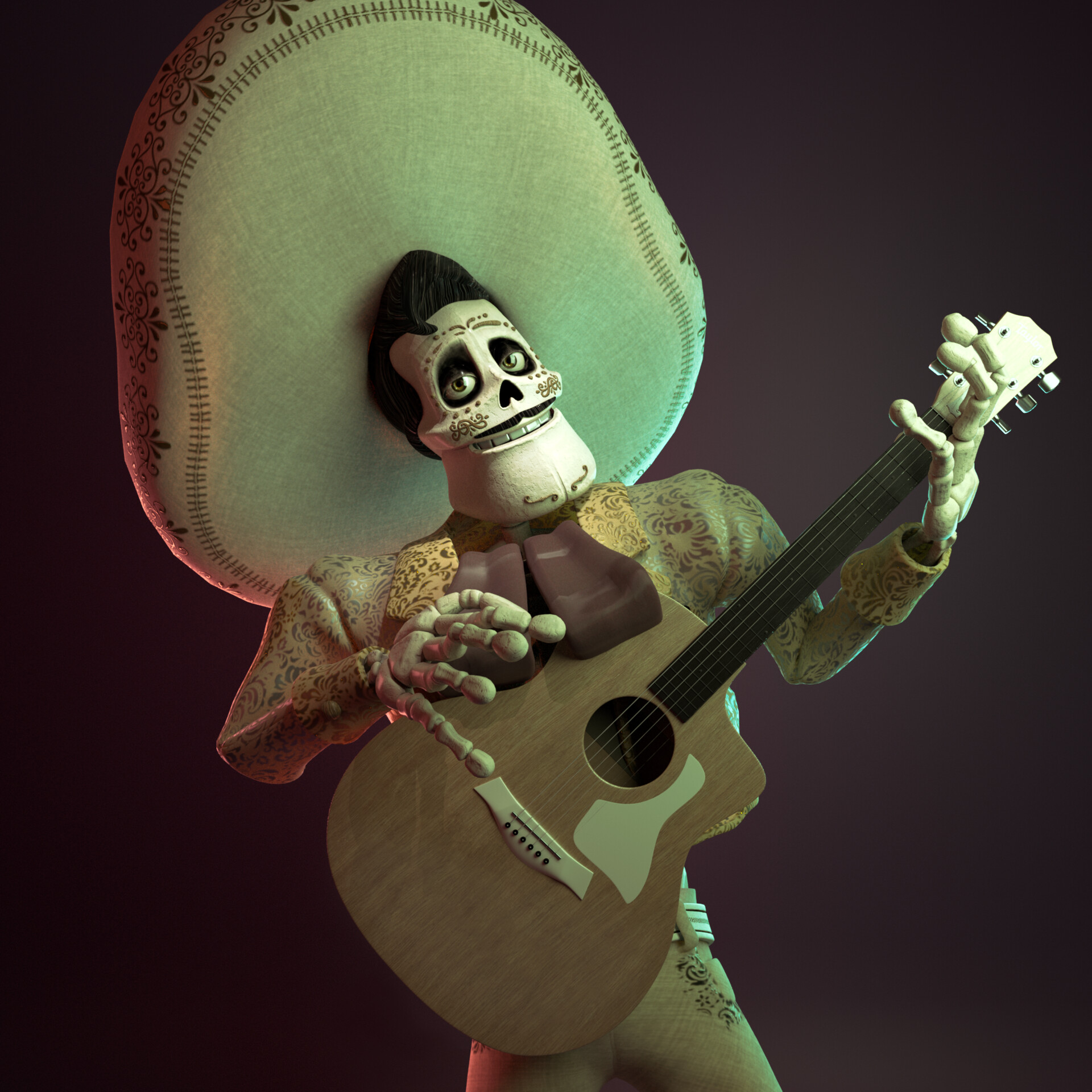
For Big Hero 6, the covert villain was Professor Callaghan; in Frozen, it was Hans; in Coco, it was Ernesto de la Cruz; the list goes on. These villains do not appear as regular villains; they are wolves in sheep’s clothing. In some cases, the audience discovers the villain’s duplicitous nature early on, but initially, they are introduced as methodical characters.
Motivations Of Covert Villains
These villains are largely after things that have been used as motives before. Some want power, others money, and some even long for revenge. In this particular group of villains, it is not what they want that is interesting but why they want it. Specifically, the fact that the audience is explicitly and clearly told what they want.
Monologuing is something that most of these covert villains do. However, seeing as they are kept hidden and disguised as normal and even helpful characters, it’s almost necessary that they have a detailed explanation of why they did what they did. Otherwise, their reveal would be entirely confusing to the viewer because it would have no context. Thus, this phase of Disney villains pushes the emerging characterization from the previous era forward.
Visual Depiction And Reveals
Due to their duplicitous nature, these villains avoid nearly all of the typical signs mentioned previously. Instead, they appear in brightly lit scenes, and their clothing fits in with the other characters. After they are revealed as a villain, their whole persona shifts, as does their visual appearance. Hans’ reveal is an excellent example of this shift. A fire roars nearby in the scene where his villainous intentions are revealed, casting light on his concerned face as Anna explains she needs true love’s kiss. Then he reveals he doesn’t love her, and his face shifts into a smug, sinister smile. Finally, he moves into the darkness, physically separating himself from her, the heroine.
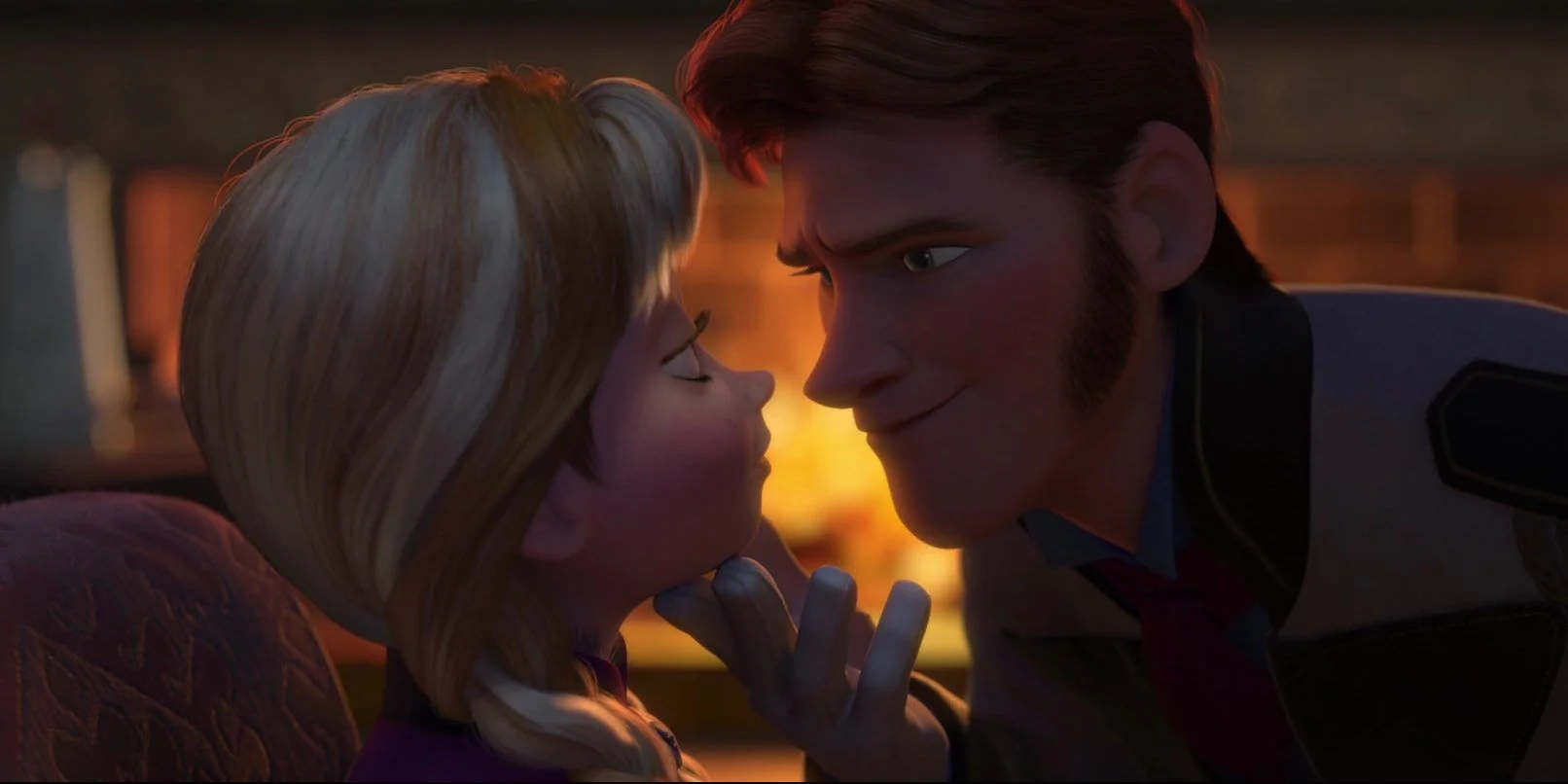
After his reveal, the first thing he does is close the blinds and snuff the fire, plunging the whole room into darkness characteristic of a classic Disney Villain. He even takes off his white gloves, symbolically removing the light from himself as well as his environment. This type of dramatic change is typical of this era of Disney villains. They might not have typical sharp, dramatic villain character designs. Still, post-reveal Disney latches onto darkness and aggressive body language to signal to viewers that this is the villain of the story. It uses the traditional depiction of villainy to emphasize the untraditional villain’s role since it can’t rely on the costume alone.
Vocal Changes After The Reveal
The vocals of these covert villains also go through a drastic shift after the covert villain’s reveal. First, they start average, just fitting in with the rest of the characters around them. After the reveal, however, they often lower their voice into the stereotypical deep tones of Disney villains of the past. This tonal change highlights the shift from normal character to villain.
This is also when the covert villains start to laugh. Of course, they might have issued some chuckles or appropriate sounds of amusements when necessary to fit in before now. Still, after their villainous reveal, they start using the previously explained inappropriate laughter. This could range from laughing at other’s misery to maniacal laughter to a sinister chuckle. This, more than anything else, is used to demonstrate that this person is much more twisted than expected.
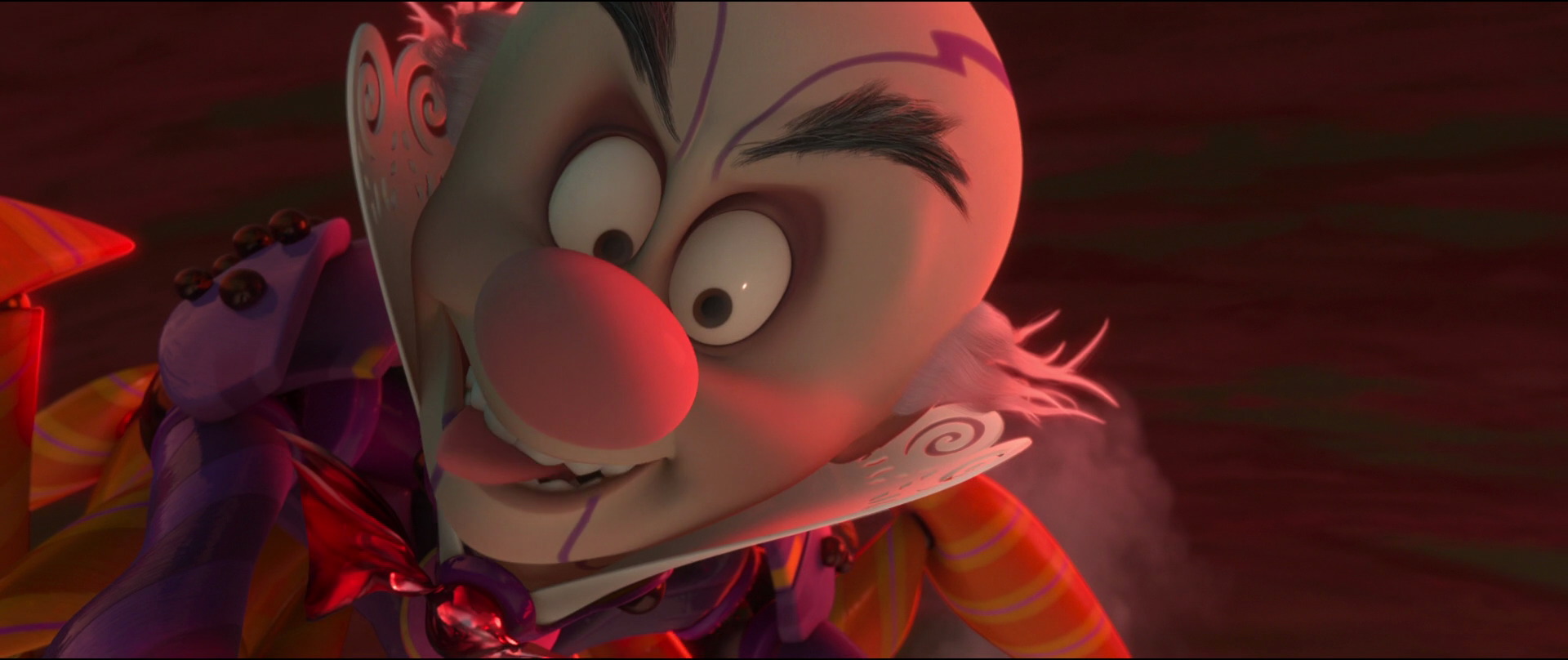
The most significant change to vocal patterns of this villain era is that most covert villains lack nongeneral American accents. The use of an accent to other the villain had previously been a staple of Disney villains.
Why Make These Changes?
It has been suggested that these shifts in the villain’s presentations were a very purposeful attempt to ensure that no stigmatized groups are targeted by new Disney villains (( Kjeldgaard-Christiansen, Jens, and Sarah Helene Schmidt. “Disney’s Shifting Visions of Villainy from the 1990s to the 2010s: A Biocultural Analysis.” Evolutionary Studies in Imaginative Culture, vol. 3, no. 2, 2019, pp. 1–16. Jstor, doi:10.26613/esic.3.2.140. )). Covert villains look like everyone else in the story; they aren’t queer coded or othered visually like previous villains were.
Laughter, low voices, and shadowed appearances are traditional and well-recognized signs of villainy that have nothing to do with any specific groups of people, so they are heavily leaned upon in this new era of villains as well. Disney is becoming much more conscious of the power that their stories have. Additionally, it might display new cultural anxiety. All of these villains are people that the main characters trusted. These are threats that come from within rather than outsiders that you can spot as immediately untrustworthy.
The last decade has been full of revelations within the United States, rather than outside forces acting upon it. These threats could be the startling rise in shootings or the growing dissension between political parties. Either way, the culture that creates these movies has been increasingly concerned with internal threats, which is reflected in this explosion of covert villains.
Society Has Changed Since The Golden Age And So Have Disney Villains
Disney Villains have drastically shifted in their presentations. Throughout the years, there are some consistencies, like low tones and maniacal laughter or general themes of darkness, to express their villainous role in the story. Other things, however, have significantly changed.
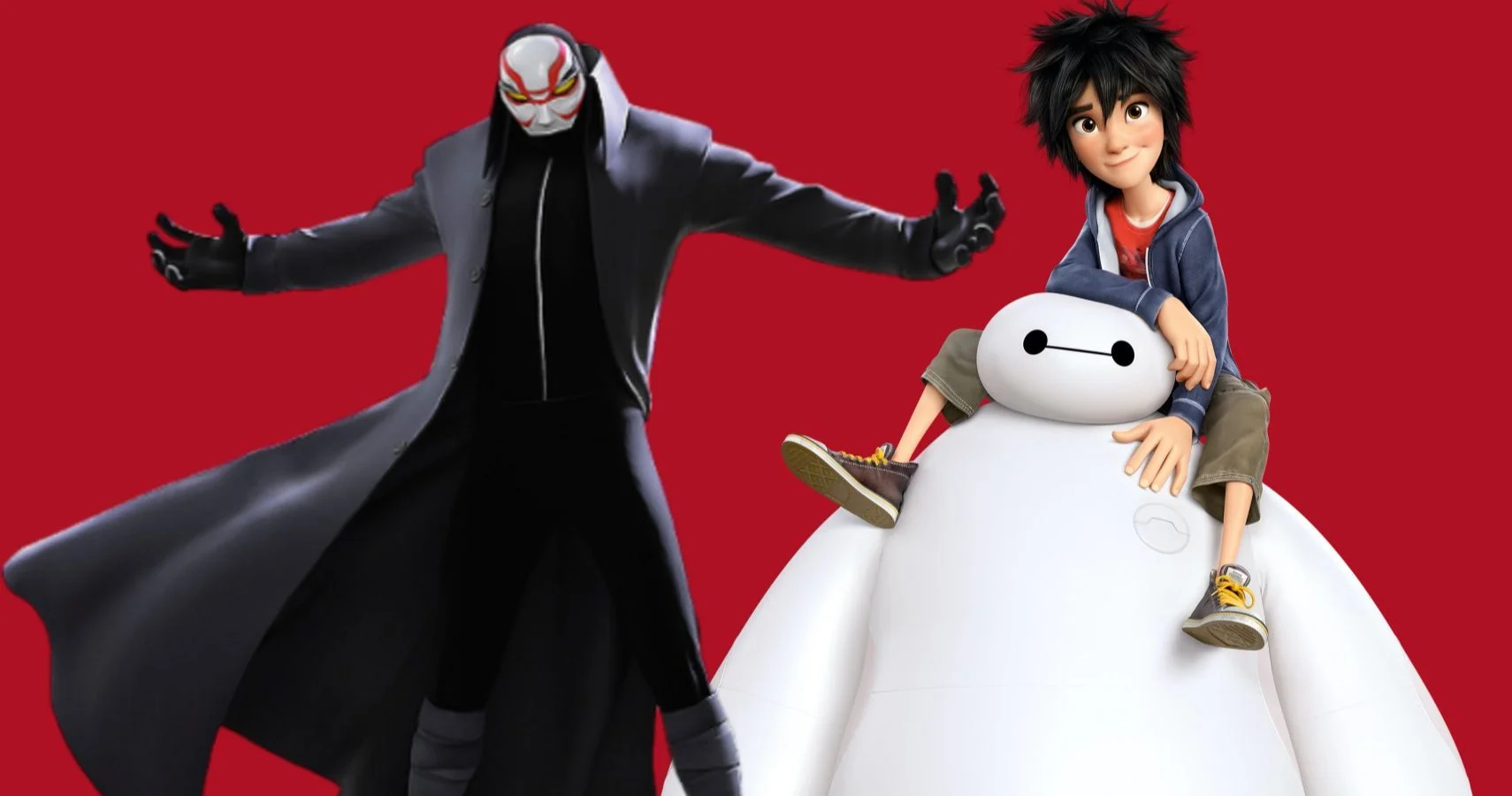
The first villains were simplistic and easy to identify. Then, things were black and white, good and evil, and nothing more than that was needed. Today, Disney villains get their own moments of interiority, and well thought out motivations guide their actions similar to the heroes. People today see the world in shades of grey and are interested in the reasons behind peoples’ actions, and the villains have grown and expanded along with that changing world view.
